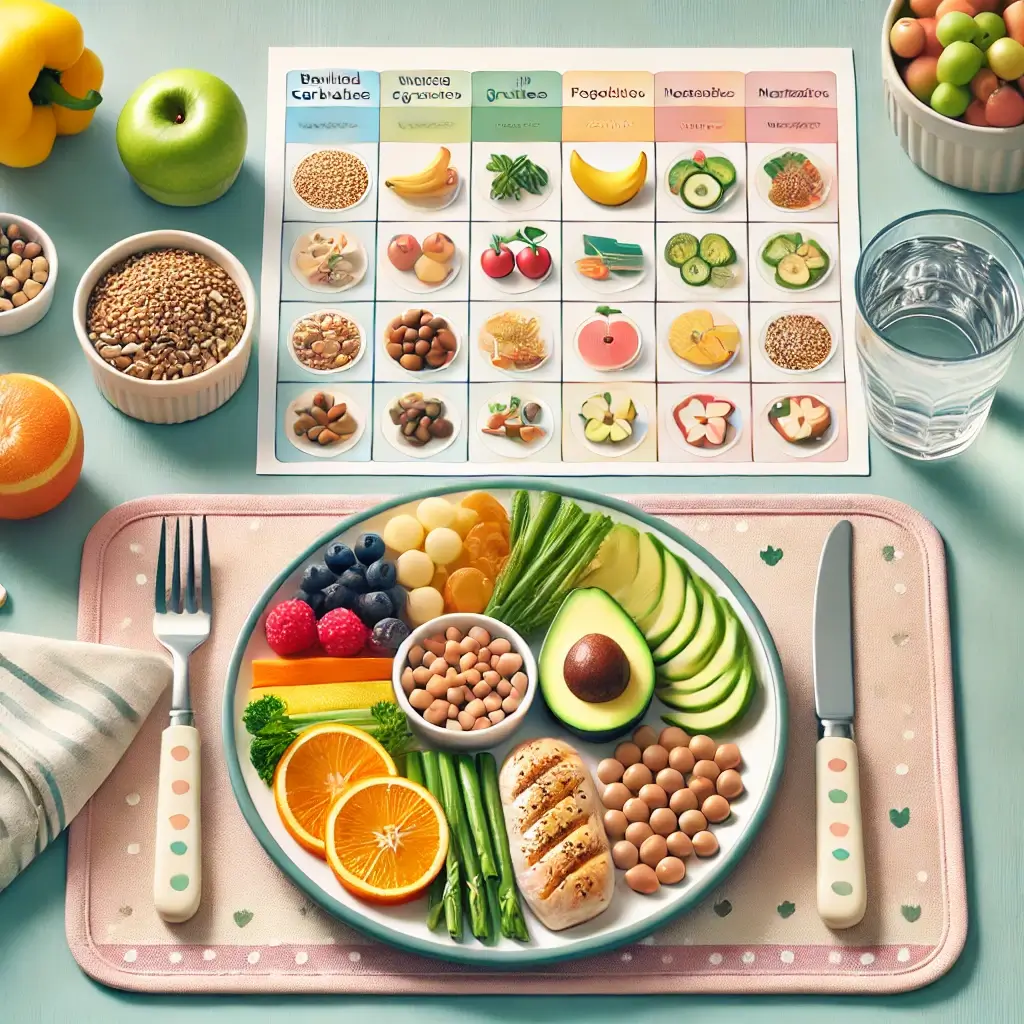Balanced Nutrition: The Key to Preventing Meltdowns
For children with autism spectrum disorder (ASD), there is no one combination of foods that are considered to be the “best” for preventing hunger meltdowns. Focusing on particular dietary principles, on the other hand, can assist in regulating blood sugar levels and reducing the frustration associated with hunger. Certain meal choices can be advantageous for the following reasons:
The Power of Well-Rounded Meals and Snacks
Attempt to consume meals and snacks that contain a combination of complex carbs, protein, and healthy fats to regulate your blood sugar levels. This well-balanced combination helps to manage blood sugar levels, which in turn helps to prevent energy crashes and dangerous meltdowns caused by low blood sugar levels.
Complex Carbohydrates: The Energy Sustainer
Whole grains, fruits, and vegetables are complex carbohydrates that offer a continuous release of energy, helping your child feel fuller for a longer period.
Protein: The Calming Nutrient
Protein consumption can not only contribute to a feeling of calmness but also to the sensation of being satiated. Lean protein sources such as chicken, fish, beans, and lentils are all excellent choices.
Healthy Fats: The Satiety Booster
Consuming healthy fats, such as those found in avocados, nuts (provided that the individual is not allergic to nuts), and olive oil, can further improve satiety and supply necessary nutrients.
Top Food Choices for Sustained Energy
Consuming whole grains, such as brown rice, quinoa, whole-wheat bread, or whole-wheat pasta, provides sustained energy compared to refined carbs.
The Rainbow on Your Plate: Fruits and Vegetables
Consuming a wide range of fruits and vegetables is beneficial to one’s general health and well-being because they provide the vitamins, minerals, and fiber necessary for proper functioning.
Lean Protein: The Fullness Factor
Consuming lean protein can help create a feeling of fullness and contribute to a sense of calm.
The Sugar Trap: Foods to Avoid
Drinks and Snacks Containing Sugar Both sugary drinks and processed snacks have the potential to substantially influence blood sugar levels in our bodies. When we ingest these kinds of foods, they are quickly absorbed into the bloodstream, resulting in a rapid increase in the amount of sugar present in the blood.
The Blood Sugar Rollercoaster
Insulin, a hormone generated by the pancreas that helps regulate blood sugar levels, is released when blood sugar levels significantly surge. This spike, however, is frequently followed by a significant drop in blood sugar, which occurs when the body attempts to compensate for the initial jump in blood sugar levels. This rollercoaster of blood sugar can lead to a variety of unpleasant symptoms, such as exhaustion, irritability, and mood swings, which are frequently referred to as “meltdowns” or “crashes.”
The Dangers of Blood Sugar Drops
A drop in blood sugar can leave us feeling physically and emotionally drained. This may make it challenging to concentrate, make decisions, and maintain a steady mood. Consuming sugary beverages and snacks on a regular basis can also, over time, contribute to the development of more serious health problems, such as insulin resistance, type 2 diabetes, and obesity.
Mindful Eating for Balanced Energy
It is essential to be conscious of the amount of sugary foods and beverages we consume to keep our blood sugar levels consistent and avoid these undesirable effects. Making a conscious decision to consume healthier options, such as water, unsweetened tea, or whole meals that are rich in nutrients, can assist us in sustaining a more balanced energy level and general well-being throughout the day. Instead of drinking sugary beverages, choose to drink water or milk.
The Refined Carb Conundrum
Refined carbohydrates include white bread, pastries, and sugary cereals. These foods can cause spikes and falls in blood sugar, contributing to meltdowns.
Personalized Nutrition: One Size Doesn’t Fit All
Personal choices: Because every child with autism spectrum disorder is an individual, their dietary choices will differ. You should provide your child with several healthy options and free them to choose within certain parameters.
Sensory Sensitivity: A Key Consideration
When selecting foods for your child, it is important to consider their sensory sensitivity. Certain children may have an aversion to particular temperatures or textures.
Strategies for Success: Beyond Food Choices
Organize Meals and Snacks: Organizing meals and snacks in advance is important to avoid rushing about at the last minute and having potential meltdowns due to hunger.
Visual Aids: A Tool for Mealtime Success
To help your child anticipate mealtimes and snack breaks, you can use visual schedules that include pictures or timers.
Positive Reinforcement: Encouraging Healthy Eating Habits
Your child should be praised for trying new meals, even if they do not like them. This is an example of positive reinforcement.
The Path to Better Nutrition: A Holistic Approach
Although there is no silver bullet, emphasizing a well-balanced diet and considering your child’s sensory preferences can considerably enhance their relationship with food and potentially lessen meltdowns caused by hunger. When you consult with a qualified dietician, they can assist you in developing a personalized food plan that caters to your child’s specific requirements.

